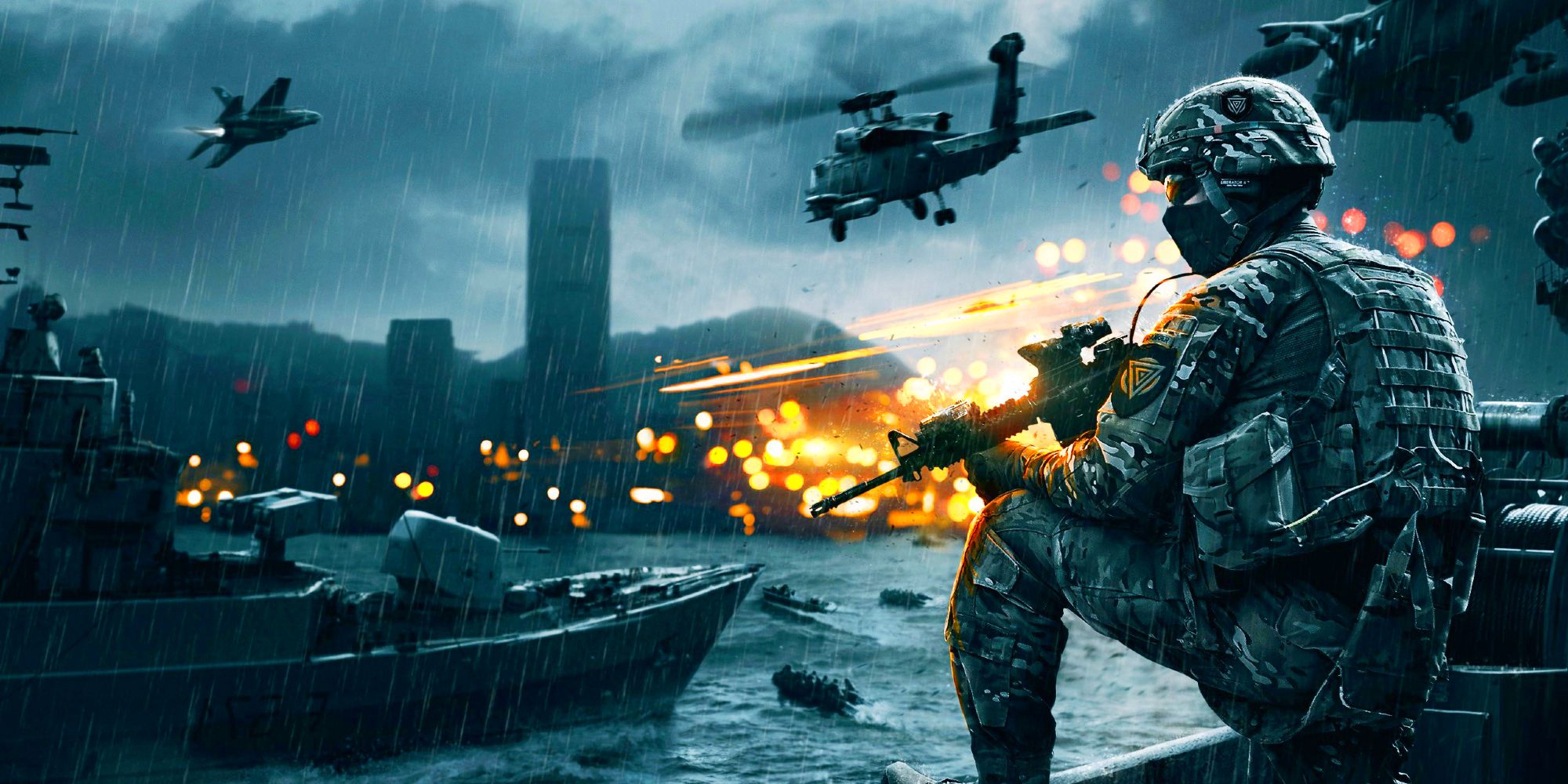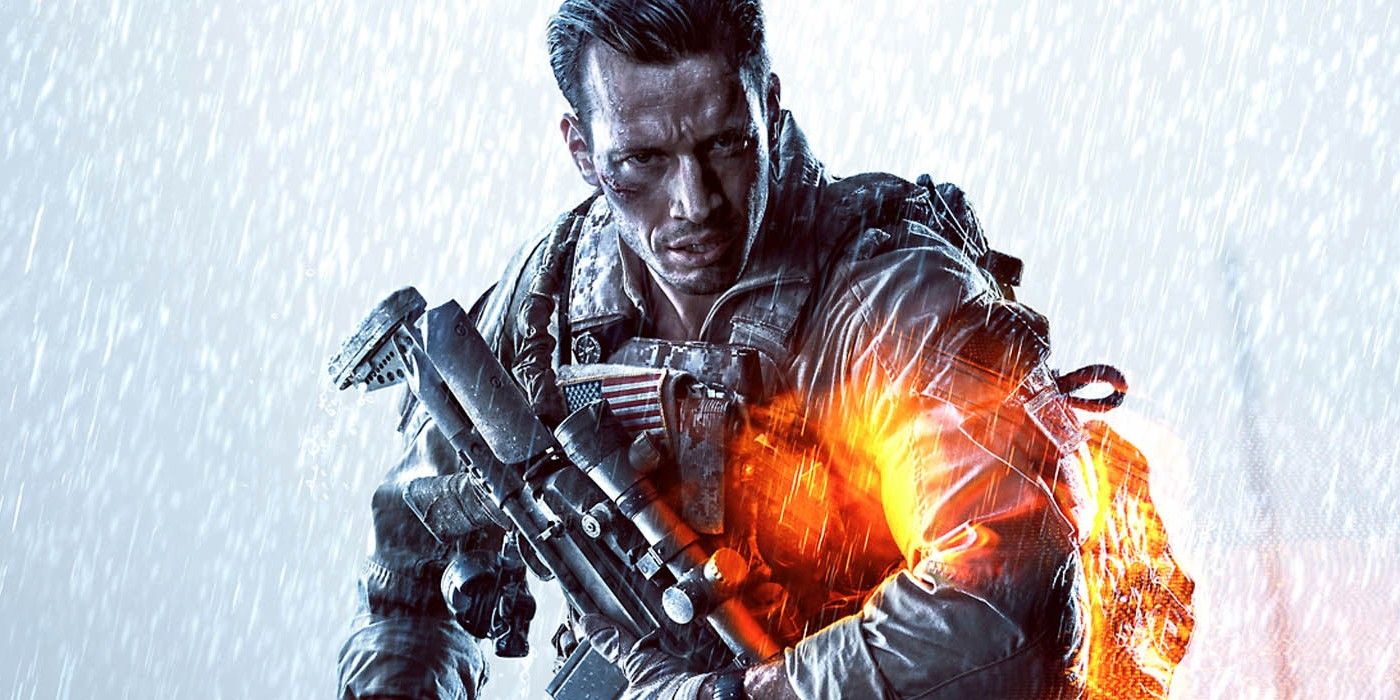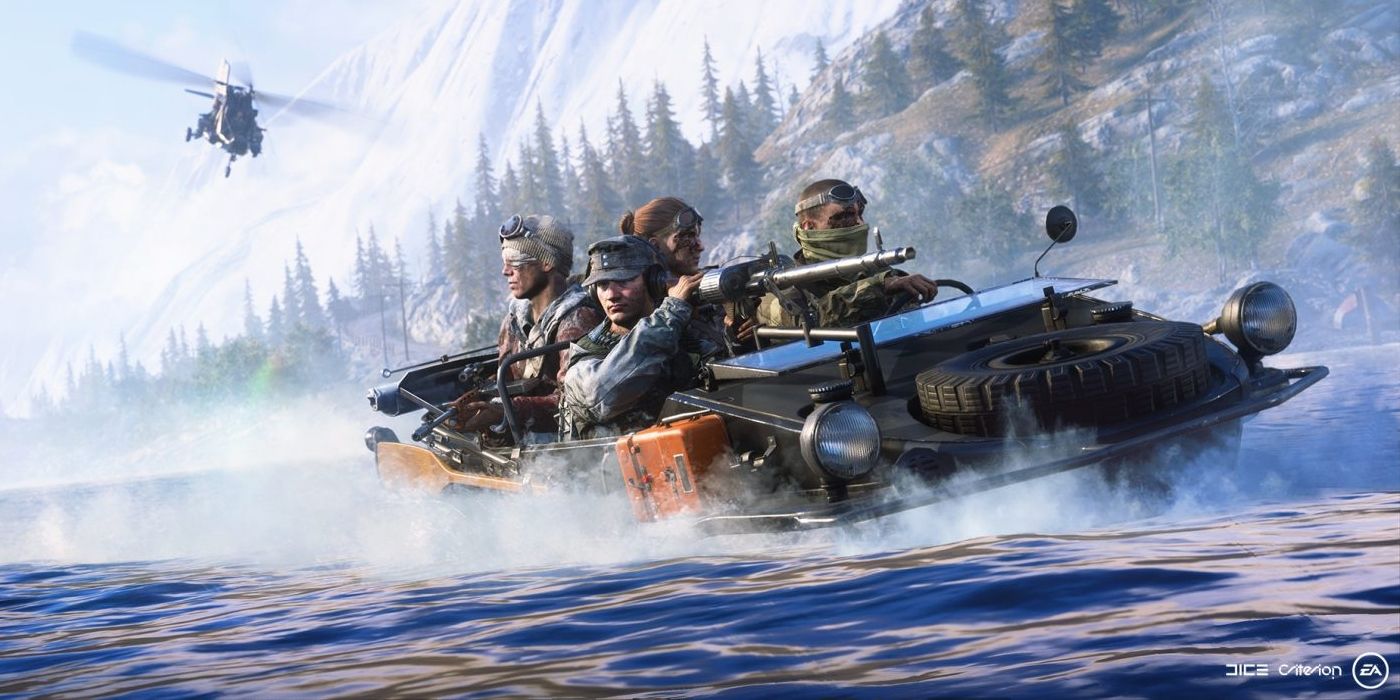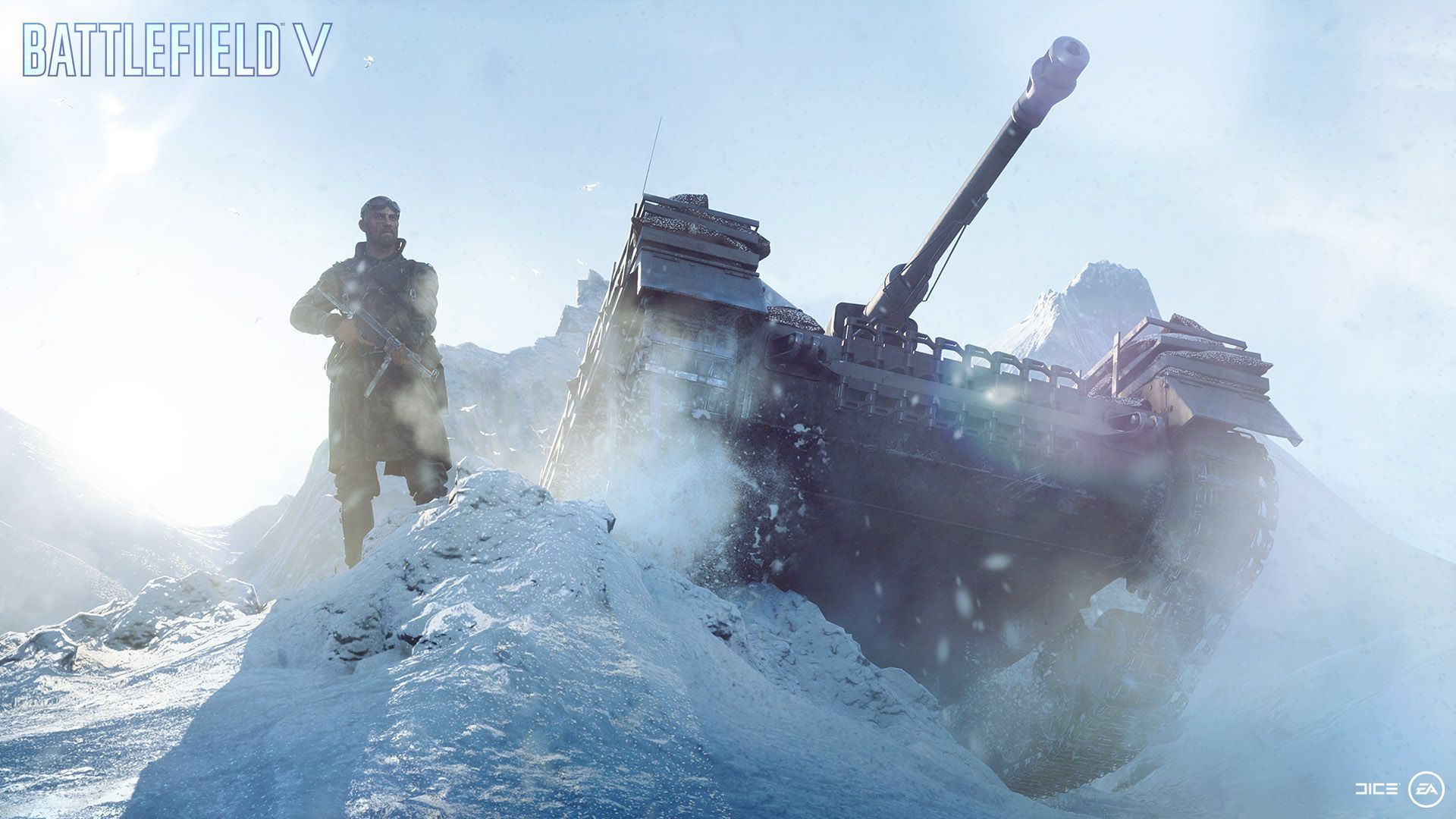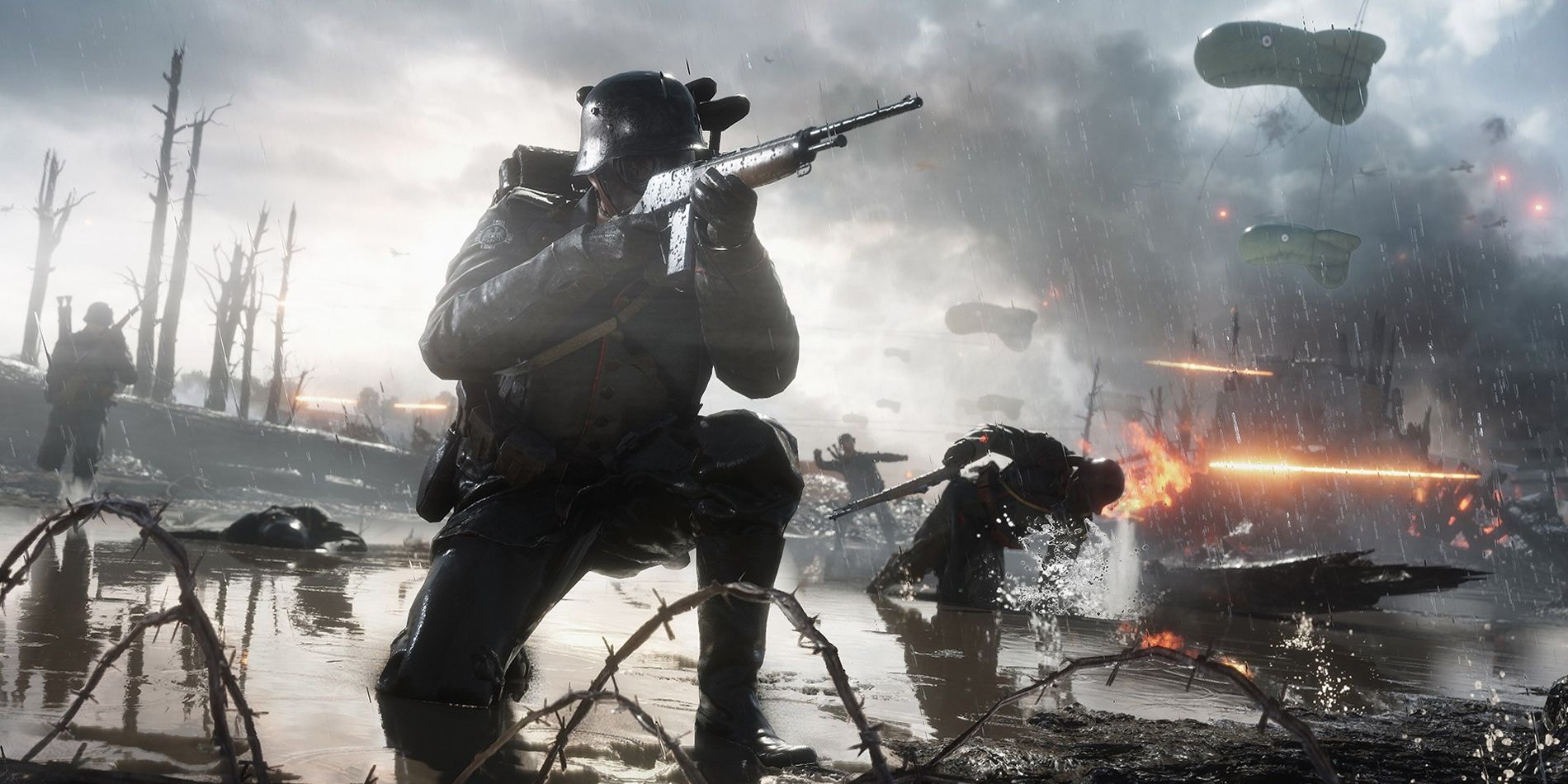The next Battlefield title is expected to arrive during the 2021 holiday season, and Electronic Arts management is confident that the gameplay will deliver on an unprecedented scale. Earlier this week, in EA's third quarter earnings report for the 2021 fiscal year, CEO Andrew Wilson claimed, "The game takes full advantage of the power of next-generation platforms to bring massive, immersive battles to life with more players than ever before." The promise of larger battles is enticing, but at what point does more players become too many?
Ever since Battlefield 2 in 2005, PC lobbies have consisted of 64 players. The PS4 and Xbox One versions of Battlefield 4 were the first instance of consoles offering the same match sizes as PC. Battlefield's bread and butter has always been delivering large scale, squad-based, destructive combat. It seems that EA's philosophy on the future of the series lies in it continuing to offer larger conflicts. However, it is still yet to be seen how many players the Battlefield formula can sustain before it becomes unrecognizable.
Battlefield is no longer a large game in terms of player count. Even Battlefield V's disastrous Firestorm mode used 64 players. The incredible popularity of battle royales has made 100 player lobbies commonplace, but developers have been pushing the boundaries of multiplayer shooters for far longer. MAG, a 2010 PlayStation 3 exclusive, had a game mode that accommodated 256 players. Although it was favorably reviewed, MAG was rife with bugs and burdened by unbalanced gameplay. PlanetSide 2 – which was released in 2012 and has a sequel coming – has servers that support lobbies of up to 2,000 players. It is truly unique in its scale, with the game's lore pitting players against each other in continent-wide battles for the control of a whole planet.
It's Time for Battlefield to Evolve
Both MAG and PlanetSide 2 offer some insight into what kind of game Battlefield might become. Battlefield V was ultimately a disappointment, alienating fans with sweeping changes to gameplay after it was already out and wasted development resources on a game modes that never saw the light of day. While Battlefield 1 has sold the most copies to date, the general consensus is that Battlefield 3 and 4 are the height of the franchise in terms of gameplay.
The major issue with wantonly increasing the Battlefield lobby size is trying to keep the series' identity intact. Traditionally, the series has excelled at squad-based and vehicle combat that heavily incentivizes completing the game mode's objectives, but now Call of Duty is encroaching on that corner of the shooter market. Rush and Conquest are the two definitive Battlefield game modes that see consistent success in utilizing the series' formula. They also happen to be the two game modes that are scaleable with an increased player count.
64 players has so far worked well for both Conquest and Rush, but that's because both game modes are fairly compatible with that number. Increasing the size of the game lobby provides different design challenges for each one, and may prove to be a complicated issue, hence DICE's reluctance to increase lobby size. Battlefield will have to work hard at creating a new identity for itself if the increase in player count is significant enough to jeopardize its mainstay game modes. Early rumblings about the state of the next game suggest Battlefield 6 will be what fans are hoping for.
Rush Has a Lower Ceiling for Battlefield Lobby Size
Rush is the most objective-based game mode of the two, and works best when played on maps specifically designed for it. One team is tasked with defending a set of objectives (usually two), while the other team must attack and destroy said objectives. Once the first set is destroyed, the defenders' spawn moves back so they can defend another set, and the attackers essentially take over the defenders' old spawn. Rush would essentially fall apart as a game mode if the player count becomes too large.
MAG's Domination game mode (the one with 256 players) attempted to segment the battle into parsable sections. Attackers would come from four distinct sides, creating four fronts on which the defenders would try to hold the center of the map. In theory this sounds wildly entertaining, but looking at it from a distance it becomes four separate Battlefield Rush games all ending in the same point. Defenders may feel like they are part of a large conflict, surrounded on all sides, but attackers will feel frustrated if another attacking platoon becomes dead weight and isn't advancing on a separate, inaccessible front.
If Rush wants to continue in its traditional one-front state, the player count can't get too large. DICE can make maps bigger, and more objectives can be added, but only to a point before the whole game mode starts to feel meaningless and devolves into an aimless deathmatch.
Battlefield Can Really Push the Boundary with Conquest
The Conquest game mode, which is probably the purest Battlefield experience, should be familiar to anyone who has played online shooters. A number of flags – usually somewhere between three and seven – are scattered throughout the map, and players must stand in the vicinity in for a length of time to capture that flag for their team. Conquest usually operates on a ticket system, with each team starting with an equal amount. Tickets are then drained gradually from the enemy's pool at a rate that correlates to how many flags are controlled, with each respawn costing one ticket as well.
It could be argued that Conquest is infinitely scaleable to accommodate more players. The flags might have to be abandoned at some point in favor of a territory system a-la PlanetSide 2. A Conquest-like ticket system could still be used with thousands of players, but individuals will start to feel diminishing returns when their singular impact can't be felt. Capturing flags alone or with a small squad can turn the tide of a match. Objectives will have to scale alongside the map/game size in order to work correctly. Could the Battlefield formula work in a persistent game?
PlanetSide 2 solves this unique issue of player agency by having servers without a win state. Instead of winning a match, players are trying to achieve that hour's/day's/week's victory. A faction in PlanetSide 2 might send most of its forces to try and take control of the final territory needed to have dominion over a whole continent. Then the battle moves elsewhere. This idea seems at odds with the gameplay designs of Battlefield that have largely been consistent for over a decade.
Battlefield has always tried to strike a balance between the importance of individual and cooperative gameplay. A prolific squad requires people to play certain roles, and in turn an entire team requires squads to coordinate their movements. In the current 64 player matches, the success of 32 players is directly impacted by the performance of the individuals. Putting 2,000 people in a giant conquest map might break down the fundamentals of the game mode, and lead to the two teams playing musical chairs with the objectives as their hordes circle the map.
Battlefield's Setting Needs to Dictate the Player Count
If rumors are to be believed, Battlefield will return to the present day with its new title. Since the devastation of industrialized combat seen in World War I, military tactics have entirely abandoned the idea of lining up thousands of combatants face-to-face. Having PlanetSide 2-sized matches in a contemporary setting would be farcical. Although nowhere near a military simulation game, Battlefield at least has the illusion of tactical gameplay.
If Battlefield wishes to keep the players' suspension of disbelief intact, then a game size like MAG would probably be the upper limit. Quadrupling the player count from 64 to 256 seems feasible, but might also bring up the issue of diminishing returns. Battlefield has always shined when squad gameplay is at the forefront. Flying a helicopter across the map and capturing a flag near the enemy base is incredibly difficult alone, but more than achievable with a competent squad. Battlefield has usually operated with four or five-person squads. If the four-player squads from Battlefield V return, that puts 32 squads per team in a lobby of 256. Would a squad only comprising 1/32nd of a team be conducive to Battlefield gameplay?
If the next Battlefield really wants to shake things up (and hopefully not in a bad way with the live service elements) it should at least double the player count to 128. There might be room for more, but pushing 200 is where the traditional Battlefield experience probably begins to break down. A lobby with 128 feasibly allows DICE to simply double a lot of gameplay mechanics. Squads of four could become squads of eight; Conquest maps could feature 10 objectives; Rush maps could be larger without splitting the game into multiple fronts.
Increasing the player count in Battlefield is a delicate process. It is already a popular and established IP, with many dedicated fans who will easily become outraged if the series becomes unrecognizable. Battlefield V's promotion and botched post-release support left fans pessimistic on DICE's ability to innovate. The increase in lobby size that EA has promised for the upcoming game is enticing, and offers the possibility for a new era in Battlefield, but players will have to wait and see if it can be pulled off.
Source: Electronic Arts

